
Summer is right around the corner!
We blinked, and now spring is halfway over. If you had plans for a spring garden, but the season got away from you, it’s not too late. Many spring veggies are cool weather crops and need those early spring temps to do well. But there are still plenty of cool-weather vegetables you can sow in late spring for a quick spring garden before the blazing temperatures of summer are here to stay.
Growing a Mid to Late Spring Garden
I live in an area where spring is always chaotic.
It’s snowing one moment, raining the next, and 90 degrees in the shade fifteen minutes after that. And we won’t even talk about the gale-force winds. Since moving to Pennsylvania, the only way I can have a successful cool-weather crop garden with things like broccoli and peas is to start it under cover or wait until the fall.
But if I’m patient (or just plain forgetful), mid to late spring offers a brief period where I can sneak in a quick spring garden.
Sure, there are a number of crops that I’ll have to wait and grow in the fall, but there are still plenty of instant-gratification veggies I can get in the ground.
I’m not the only one. If you’ve got another 30-60 days before the mercury stays consistently above 75 degrees F, then you’ve got time to grow these spring vegetables. You might even be able to get more than one planting in the ground for a few of them.
Here are 9 cool-weather crops you can sow in late spring for a quick spring garden.
1. Radishes
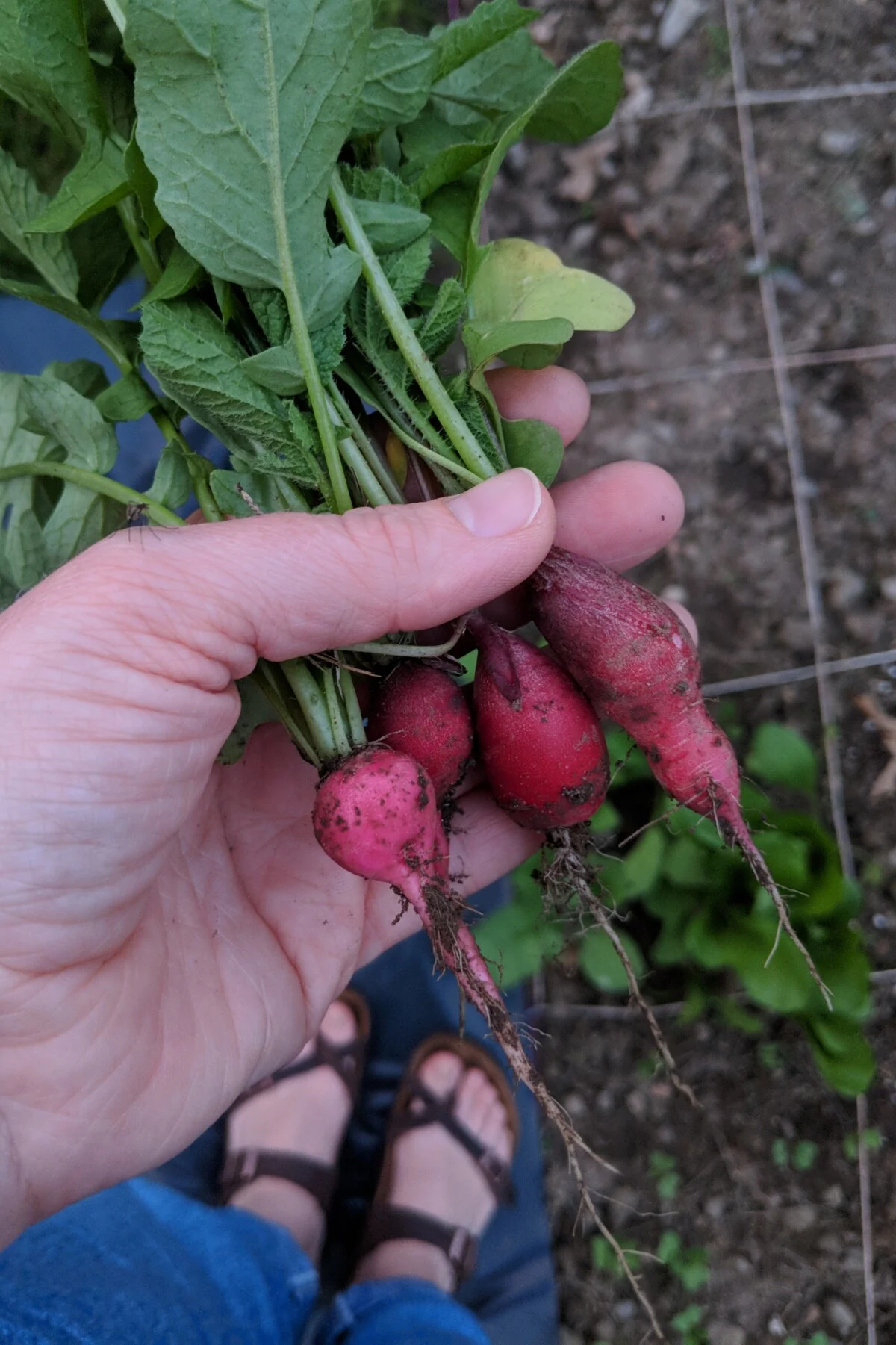
Radishes are one of my favorite vegetables to grow for instant gratification. With most varieties only needing 30 days to mature, I always have a few packets of radish seeds ready to go.
Over the years, I’ve found the best way to plant them is in sets of ten every ten days. That way, I have a constant supply of radishes right up until it gets too hot to grow them. Once you pick a set, sow new seeds right where you just harvested.
Once it gets too hot, try leaving a few radishes to go to seed. Radish seed pods are a crunchy, spicy snack every gardener should try at least once.
- Care: Plant radishes in well-drained soil that receives full sunlight. Keep the soil consistently moist but not waterlogged. Don’t fertilize them, or you’ll end up with only leaves.
- Seed Spacing: Space seeds about 3-4 inches apart.
- Planting Depth: Plant seeds ½ inch deep.
- Days to Maturity: Radishes typically mature in 20-30 days, depending on the variety.
Related Reading: How to Grow Your Best Radishes Yet – Seed To Table In 25 Days Or Less
2. Japanese White Turnips
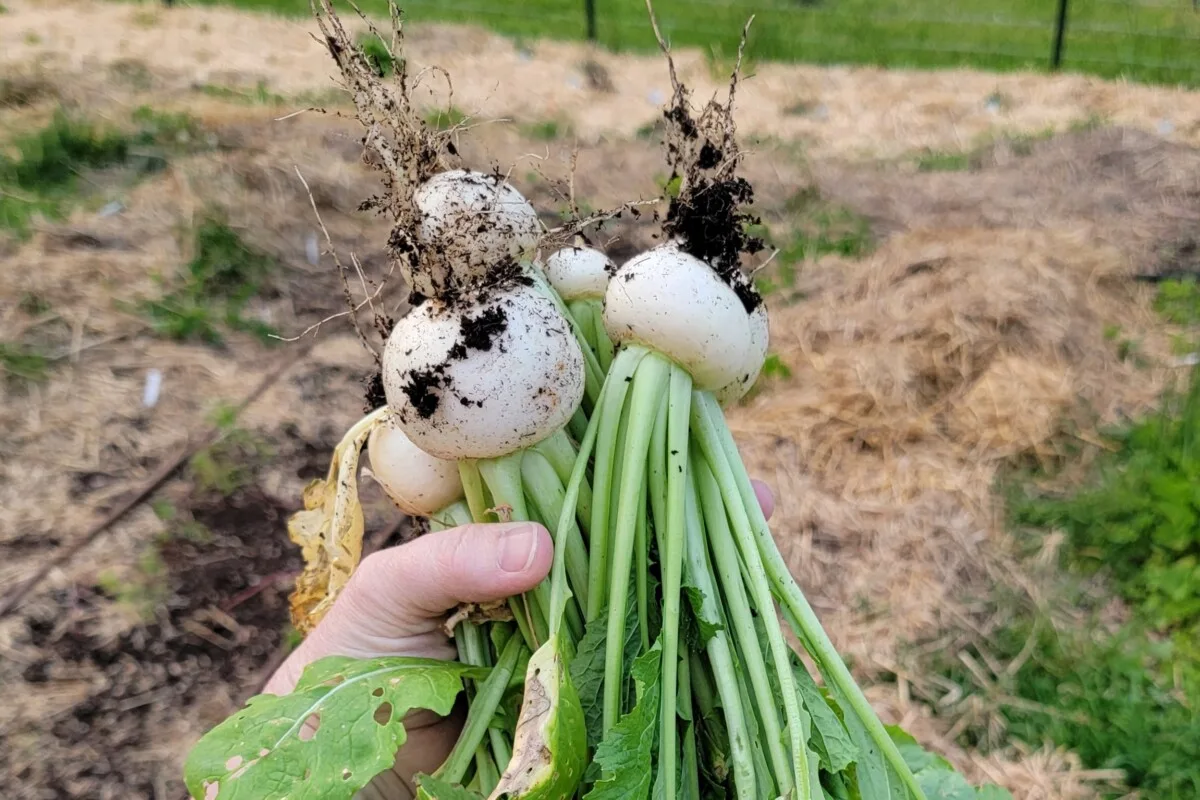
I have never been a big fan of turnips. Then, one summer, a friend asked if I wanted to pick up their CSA while they were on vacation. That’s when I discovered Japanese turnips. These small white bulbs were nothing like the big pink and white things my grandmother forced me to eat as a kid.
These were tender, crunchy and slightly sweet. I was hooked.
Japanese turnips are great raw or cooked, and with only 50 days to maturity, they make an excellent addition to any spring garden.
- Care: Turnips prefer well-drained soil with plenty of organic matter. They thrive in full sunlight but can tolerate partial shade.
- Seed Spacing: Sow turnip seeds 2-4 inches apart and thin to 4 inches apart.
- Planting Depth: Plant seeds ½ to ¾ inch deep.
- Days to Maturity: Turnips usually mature in 50-60 days.
3. Beets
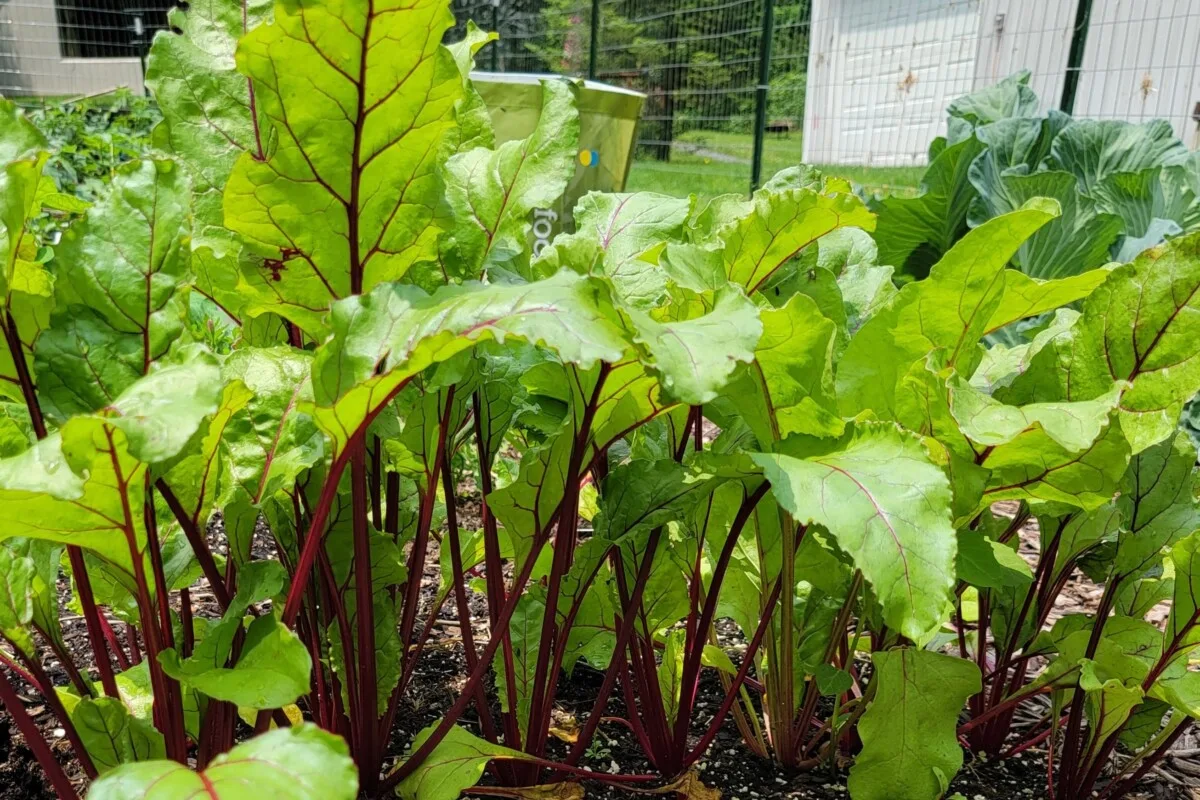
Okay, even if you don’t like beets, hear me out. Beets are worth growing for the greens alone, and you can eat those in a matter of weeks. Leave the beets in the ground and keep eating those tasty leaves. If you pick the leaves small, they’re great in salads. If you wait and let them bulk up, you can cook them like you would any other sturdy green.
Of course, you can still harvest the bulbs, too. In about a month and a half, you could be eating a roasted beet salad with goat cheese and grapefruit. Or, for the truly adventurous, why not make a batch of beet wine? (Trust me, it tastes better than it sounds, like a nice dry red.)
- Care: Beets grow best in loose, well-drained soil with a pH of 6.0-7.0. They prefer full sunlight but can tolerate partial shade.
- Seed Spacing: Sow beet seeds 1-2 inches apart, thin to 4 inches apart if you plan on harvesting the bulbs.
- Planting Depth: Plant seeds ½ to 1 inch deep.
- Days to Maturity: Beets typically mature in 50-70 days.
4. Snow Peas
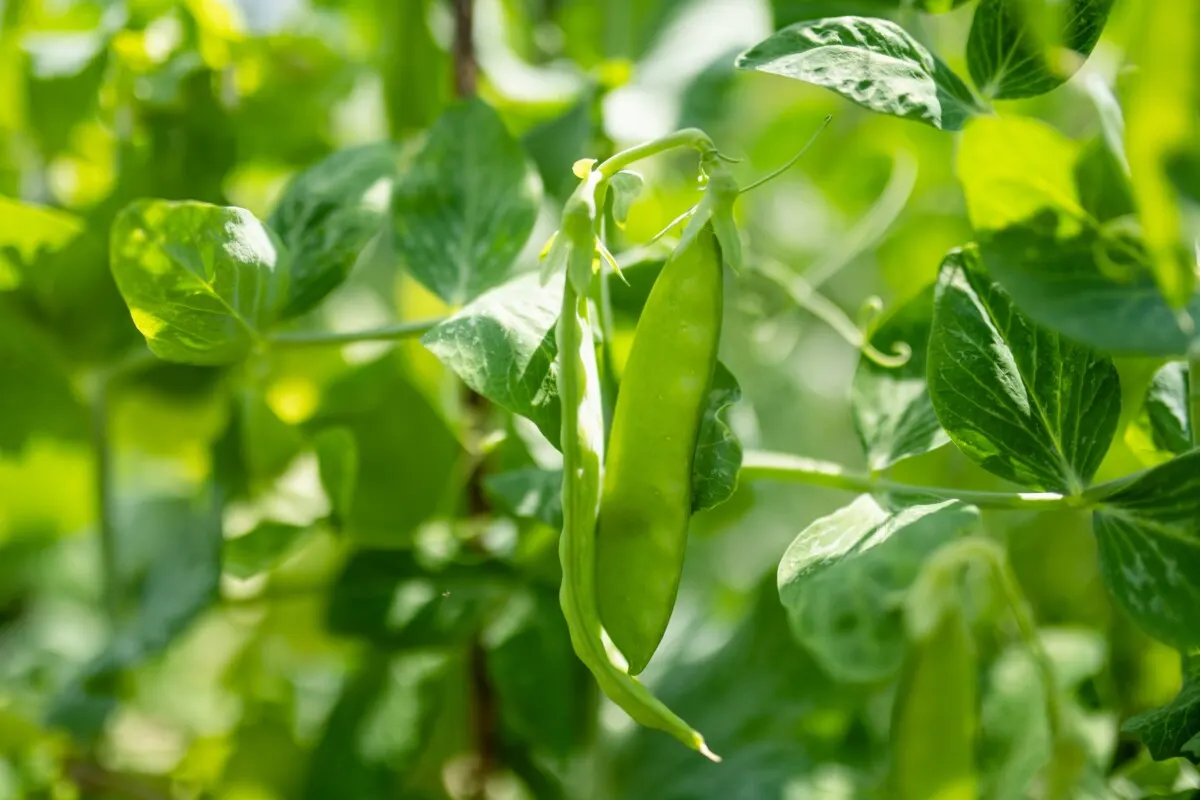
If you’re cutting it a little too close for sugar or shelling peas, why not grow snow peas? With their thin, tender pods, you’ll be able to enjoy them in salads and stir-fries well before BBQ season is here. Not to mention, you can eat the shoots and leaves as well.
If you quickly blanch snow peas and then freeze them in a single layer on a baking sheet, you can enjoy them well after spring.
- Care: Snow peas prefer well-drained soil. Provide support for vines to climb.
- Seed Spacing: Plant snow pea seeds 4 inches apart.
- Planting Depth: Plant seeds 1 inch deep.
- Days to Maturity: Snow peas usually mature in 50-60 days.
5. Bok Choy

Not only is bok choy easy to grow, but it grows quickly, too. This Asian green is obviously great in stir-fries, but it really shines when roasted. The high heat caramelizes the natural sugars, giving it a slightly sweet flavor. Just cut them lengthwise and roast with the cut side down.
For even faster-growing bok choy, try these Baby Bok Choy. They’re a hoot! I always tuck a seed or two in among my flower boxes. They’re pretty and delicious.
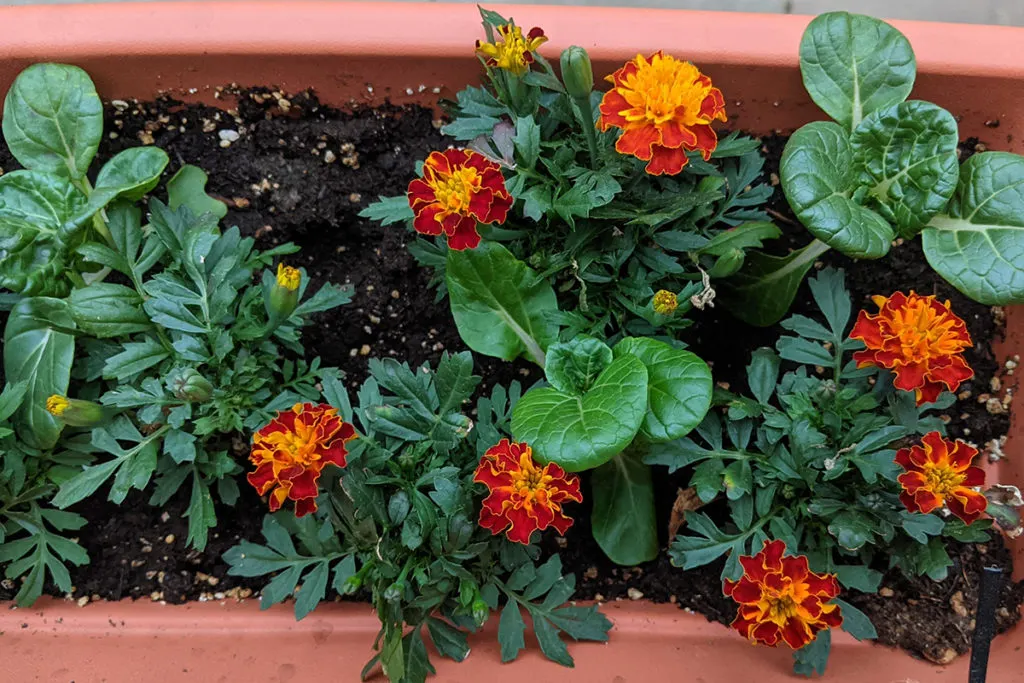
- Care: Bok choy prefers rich, well-drained soil and partial shade. Keep the soil consistently moist.
- Seed Spacing: Sow bok choy seeds 6 inches apart.
- Planting Depth: Plant seeds ¼ to ½ inch deep.
- Days to Maturity: Bok choy typically matures in 45-60 days.
6. Lettuce
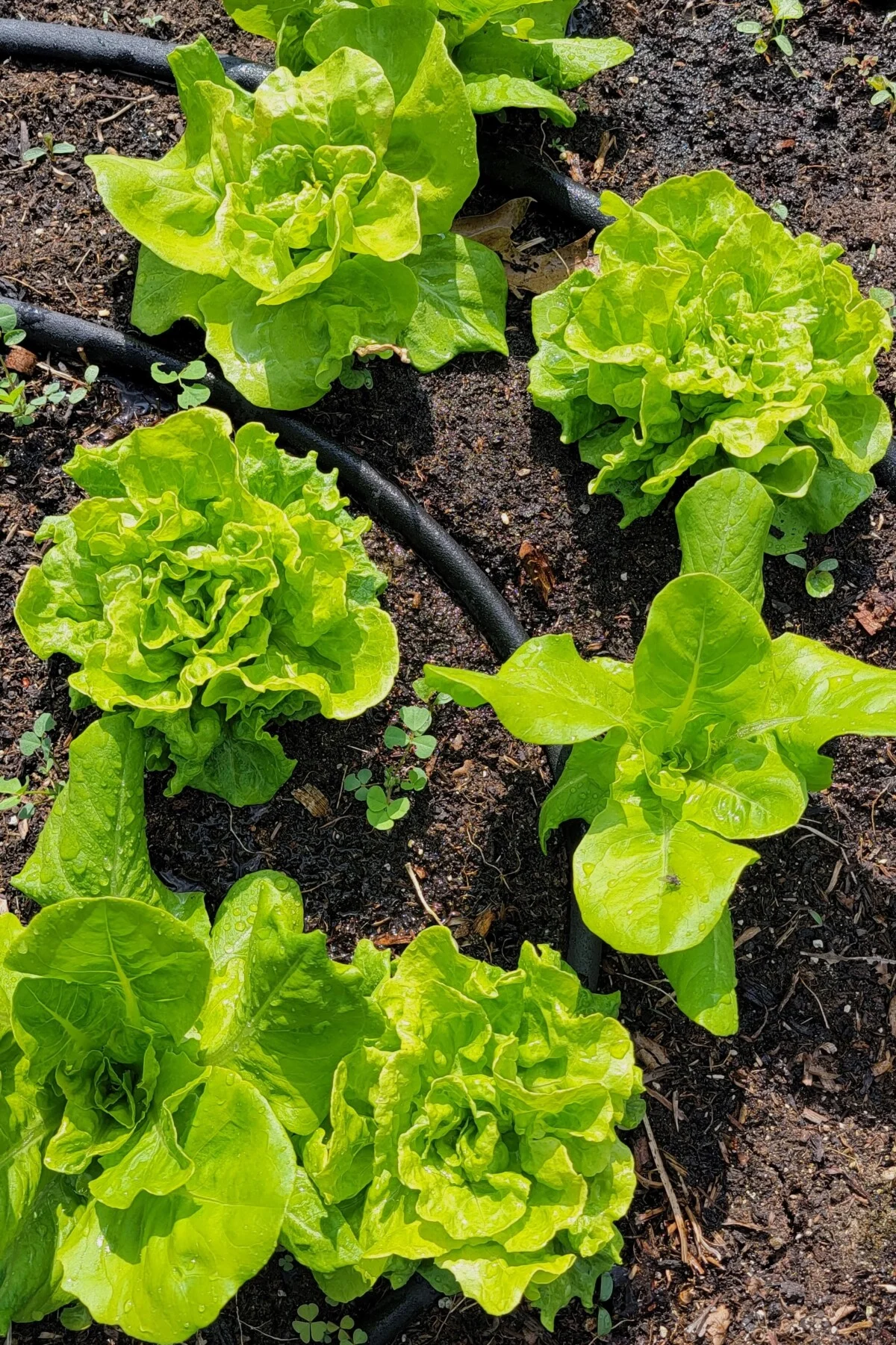
While it might be too late for most head-type lettuces, if you stick with cut-and-come-again leaf lettuces, you can still grow lettuce before the heat sets in for good. If you’ve got a section of your garden that’s a bit shady during certain parts of the day, plant your lettuces there.
- Care: Lettuce prefers rich, well-drained soil and partial shade, especially in warmer climates. Keep the soil consistently moist.
- Seed Spacing: Sow lettuce seeds 6-8 inches apart.
- Planting Depth: Plant seeds ¼ to ½ inch deep.
- Days to Maturity: Lettuce usually matures in 30-60 days, depending on the variety.
7. Spinach
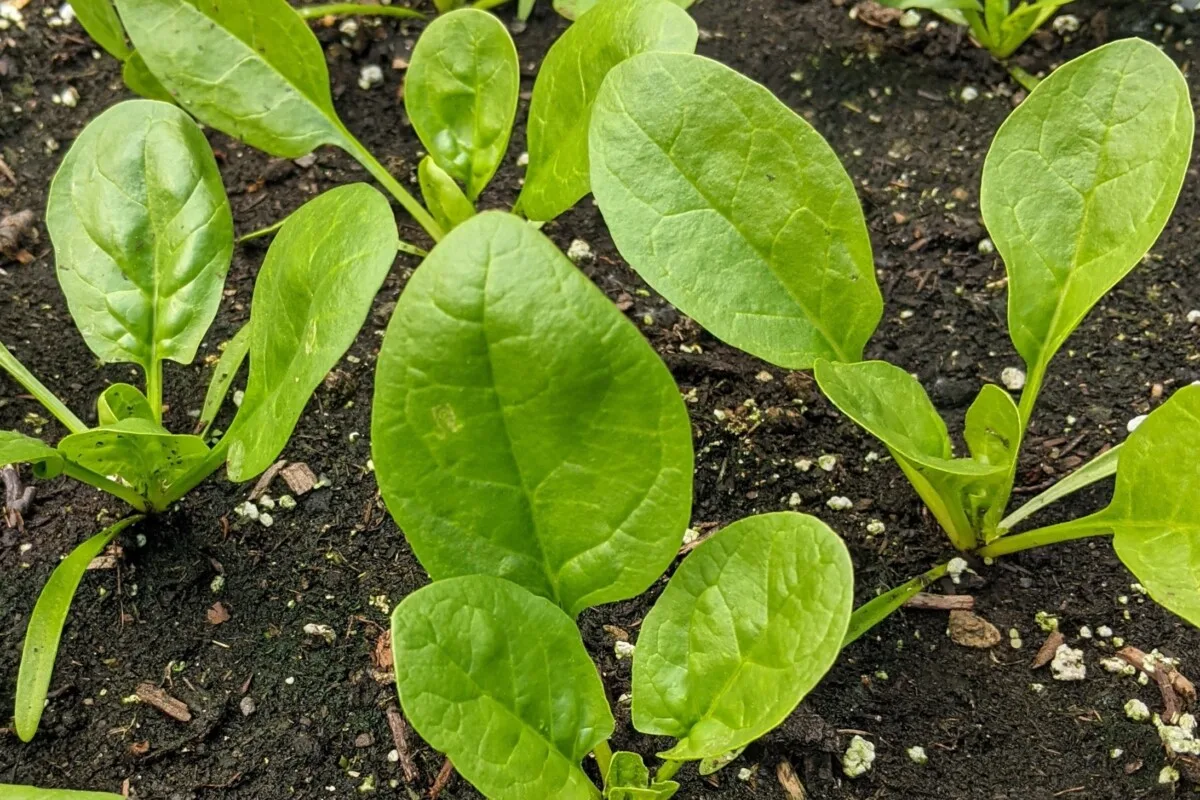
Another spring veggie that likes a bit of shade, you can still grow a crop of spinach even if you’re a bit late getting started. Many varieties mature around 45 days. When growing spinach late in the spring, I find it easiest to pull up the entire plant when I’m harvesting it. That way, the space is ready for whatever warm-weather crop will be planted next.
- Care: Spinach prefers rich, well-drained soil and cooler temperatures. Provide partial shade in warmer climates.
- Seed Spacing: Sow spinach seeds 6-8 inches apart, depending on the variety.
- Planting Depth: Plant seeds ½ to 1 inch deep.
- Days to Maturity: Spinach typically matures in 40-50 days.
8. Arugula
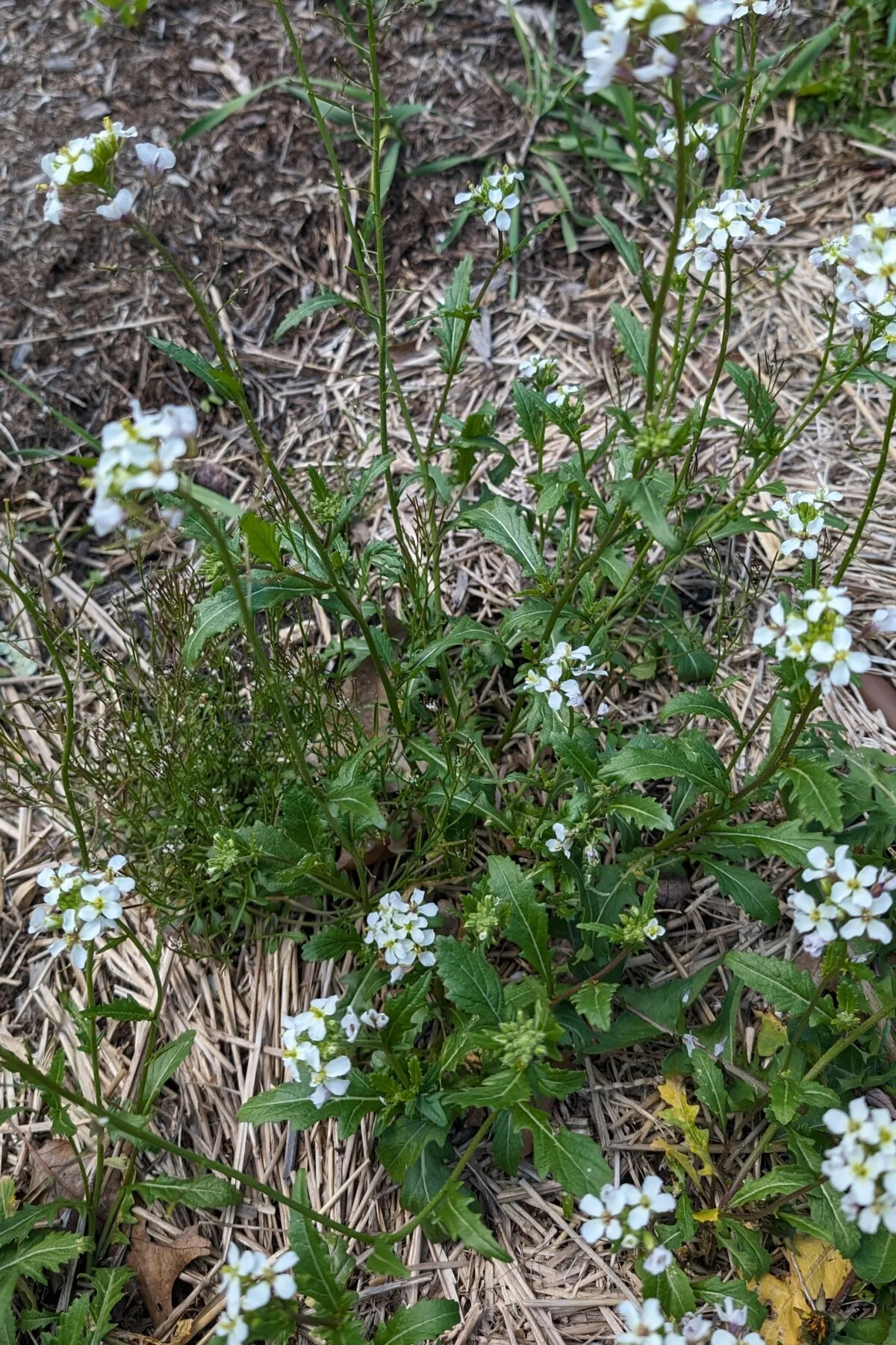
Salads get boring fast if you’ve only got lettuce in your bowl. After a long winter of rich foods, arugula offers you a zesty punch befitting the season. Not to mention, most varieties mature in about 30 days.
If you want to try something extra zingy, I highly recommend this wasabi arugula. It’s got some serious zing, with the characteristic cool heat of wasabi. Leave a few plants to go to seed, and you’ll only have to plant it once. Mine is kind enough to self-seed each year.
- Care: Arugula prefers well-drained soil and partial shade. Keep the soil consistently moist.
- Seed Spacing: Sow arugula seeds 4-6 inches apart.
- Planting Depth: Plant seeds ¼ to ½ inch deep.
- Days to Maturity: Arugula usually matures in 30-40 days.
9. Kohlrabi

I’m going to tell you a secret about broccoli – we’re all eating the wrong part. The very best part of broccoli is undoubtedly the stem, not the florets. So, skip growing broccoli and grow kohlrabi instead. It’s like an entire bulb of broccoli stem. Not to mention, it matures in about a month and a half!
- Care: Kohlrabi prefers well-drained soil rich in organic matter and full sunlight. Keep the soil consistently moist.
- Seed Spacing: Sow kohlrabi seeds 6 inches apart.
- Planting Depth: Plant seeds ¼ to ½ inch deep.
- Days to Maturity: Kohlrabi typically matures in 55-60 days.
Of course, you don’t have to plant a spring garden to enjoy delicious, fresh green food. Spring is a great time to forage for wild food. I’m lucky enough to be able to pick salad greens simply from the weeds in my yard.
But if you get started today, you’ll be munching on fresh, green veggies before it’s time to get the beans planted. Those in cooler climates with shorter growing seasons have even more time to play with.

Get the famous Rural Sprout newsletter delivered to your inbox.
Including Sunday musings from our editor, Tracey, as well as “What’s Up Wednesday” our roundup of what’s in season and new article updates and alerts.

